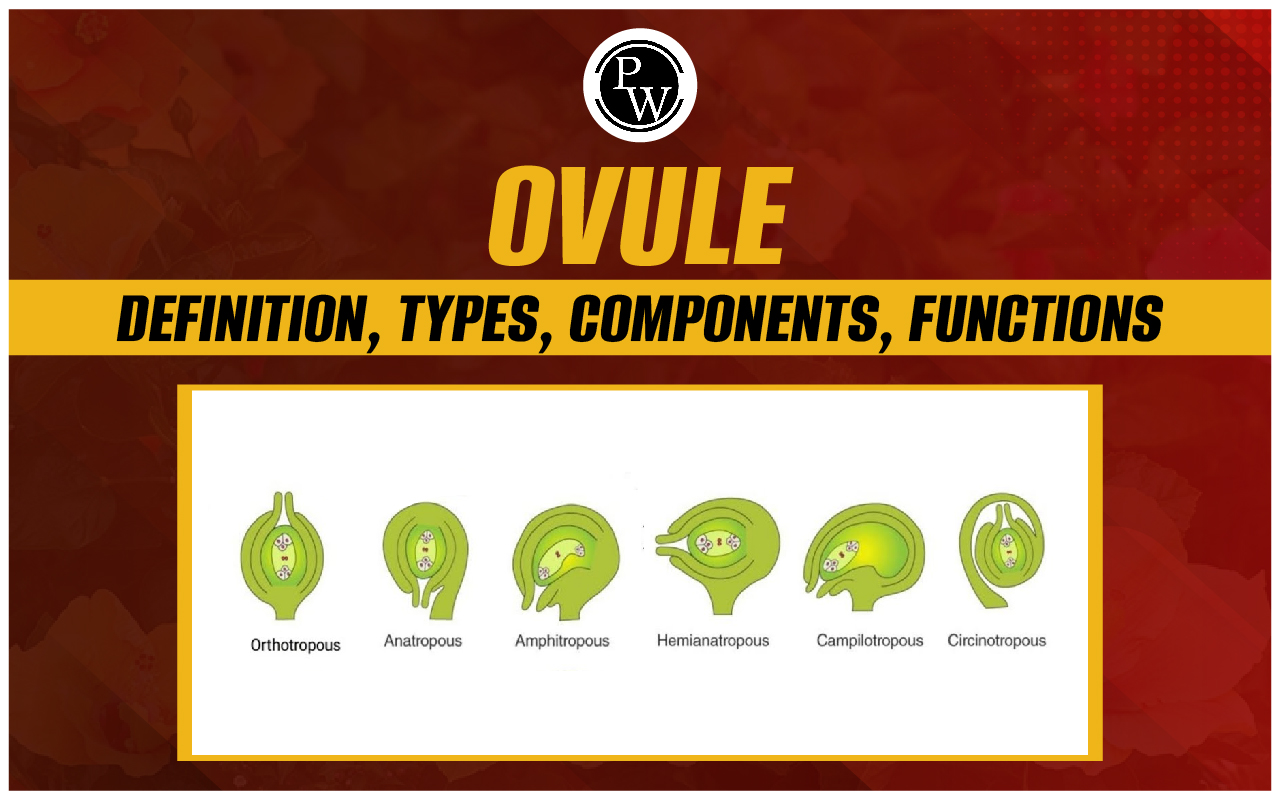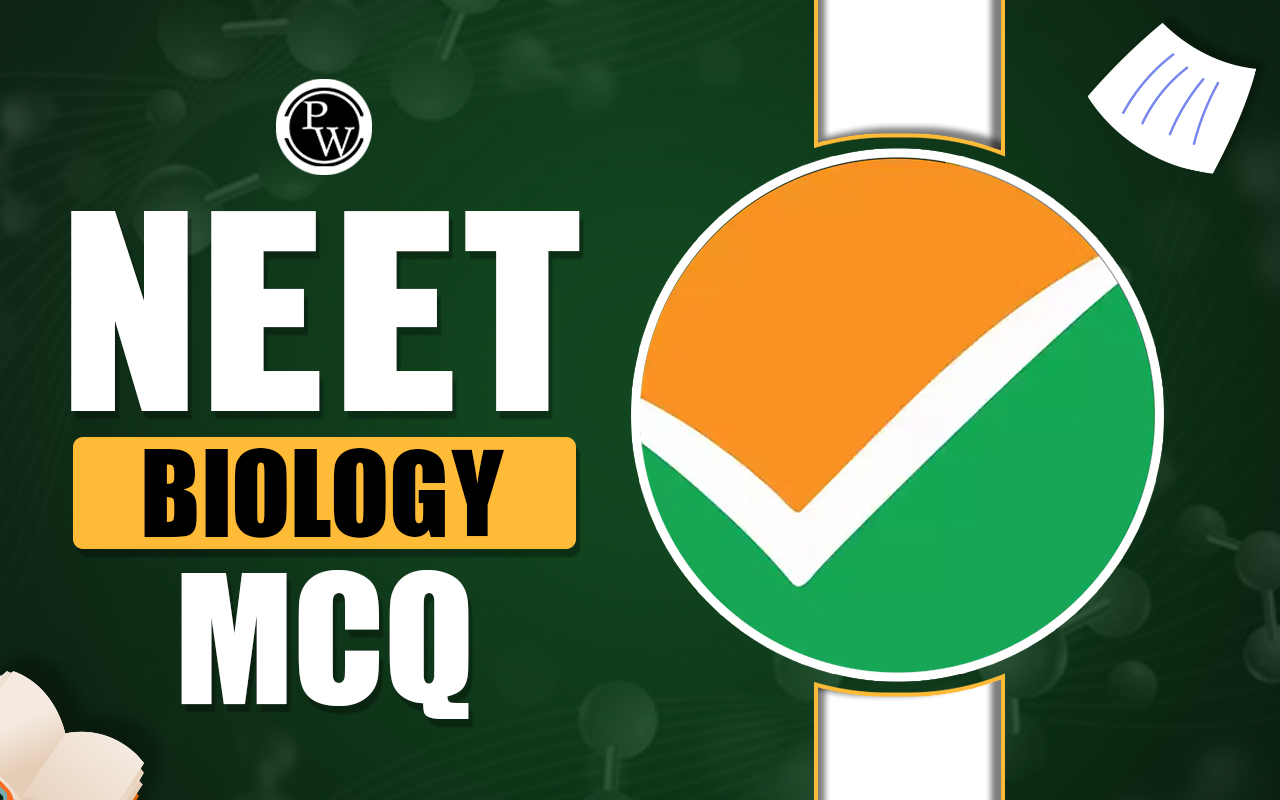

Ovule: In seed plants, the ovule is an important part of the female reproductive system. It is the site for the production and containment of female reproductive cells, which eventually mature into a seed after fertilisation, resulting in the growth of a full-fledged adult plant. The ovule is enclosed within the ovaries and sits at the base of a vase-like structure known as the carpel. It has a neck called the style and an upper opening called the stigma.
Following fertilisation, the ovule swells, and its wall toughens in preparation for seed development while the ovary grows around it, eventually forming the fruit. It is worth noting that some plants, like avocados, have only one ovule in their ovary, whereas others, like kiwifruits, have multiple ovules that produce a lot of seeds within the fruit. Plants also differ in terms of ovule location; in gymnosperms such as conifers, ovules are located on the scales of female cones, whereas in angiosperms or flowering plants, ovules are housed within the ovary within the carpel. The following article contains more information on ovule definition, ovules in plants and humans, and how ovules function.What is Ovule?
In seed plants, the ovule is a part that grows and holds the female reproductive cells. It has three main parts: the outer layer called the integument, the nucleus, and a remnant of the megasporangium. The female gametophyte, formed from a megagametophyte, is known as the embryo sac in flowering plants. The megagametophyte makes an egg cell needed for fertilisation. Ovules can be positioned in different ways, such as anatropous, where the micropyle faces the placenta when turned inside out, or campylotropous, amphitropous, or orthotropous. They look like a megasporangium surrounded by integuments. Usually, they are made of diploid maternal tissue containing a megasporocyte. The megaspores stay inside and divide to create the haploid female gametophyte or megagametophyte, which also remains inside. The leftover tissue of the megasporangium surrounds the gametophyte. The gametophytes produce archegonia, which make the egg cells. After fertilisation, a diploid zygote forms, and cell division starts, eventually leading to the development of a sporophyte embryo.Ovule Structure
A flowering plant's ovary contains a small structure known as an ovule. It is an important part of the plant's reproductive system because it houses the female gametophyte, which matures into a seed after fertilisation. An ovule structure is composed of the following parts:- Integument: This is the outermost layer of the ovule, also known as the seed coat. Its main function is to protect the inner tissues. Some ovules have one integument (unitegmic), while others have two (bitegmic).
- Micropyle: A tiny opening in the integument that allows the pollen tube to enter and deliver sperm cells for fertilisation.
- Nucellus: The central tissue of the ovule, which contains a megasporangium (a sac that produces spores). This megasporangium gives rise to a megaspore mother cell, which undergoes meiosis to produce haploid megaspores. One of these megaspores develops into the female gametophyte.
- Female gametophyte (embryo sac): This is a multicellular structure that develops from a megaspore within the nucellus. It contains the egg cell, which fuses with a sperm cell during fertilisation to form a zygote. The zygote then develops into an embryo.
- Funiculus: This is the stalk that attaches the ovule to the placenta, which is the point within the ovary where ovules are produced.
- Hilum: The point where the ovule is attached to the funiculus. It acts as a passage for nutrients and water to reach the developing ovule.
- Chalaza: The basal region of the ovule where the integument, nucellus, and funiculus come together.
Ovule Types
Ovules exhibit a variety of shapes and sizes, with six primary classifications based on their orientation about the stalk (funicle) and attachment point (hilum).- Orthotropous: This represents the simplest and most primitive form of ovule. In orthotropous ovules, the micropyle (through which pollen enters), chalazal end (point of attachment), and funicle are aligned in a straight line.
- Anatropous: This is the most prevalent type of ovule in flowering plants. In anatropous ovules, the ovule body is inverted by 180 degrees, bringing the micropyle and hilum into close proximity at the same end.
- Campylotropous: In this type of ovule, the body is curved resembling a banana, with the micropyle pointing generally towards the chalazal end.
- Amphitropous: Here, the ovule body is also curved, but to a lesser extent than campylotropous ovules. The curvature positions the micropyle and chalazal end at right angles to the funicle.
- Hemianatropous: In this ovule type, the body bends at nearly a right angle to the funicle, with the micropyle directed away from the chalazal end.
- Circinotropous: This is a rare ovule type where the body forms a complete circle, causing the micropyle to face upwards.
| Other NEET Biology Topics | ||
|---|---|---|
| Ribosomes | Pollination | Apomixis |
| Centrosome | Embryo | Tissues |
| Rhizopus | Pinus | Gluconeogenesis |
| Chlamydomonas | Chara | Ribs |
Function of Ovule
The ovule is a small structure in a plant's ovary that becomes a seed after fertilisation, crucial for plant reproduction. Its functions include:Ovule In Plants
An ovule in plant is a structure within the female reproductive organ that develops into a seed after fertilisation. It contains the egg cell of the plant, which combines with a sperm cell to form a zygote, the first cell of a new generation. The ovule has three main parts:- The tough outer coat that protects the embryo.
- The inner layer containing the female gametophyte.
- The female gametophyte housing the egg cell.
Ovules in Human
In humans, the term "ovule" is not commonly used; the correct term is "ovum," which is also referred to as an egg cell. The ovum is the female reproductive cell produced by the ovaries. Despite being one of the largest cells in the human body, it is only about 0.1 millimeters in diameter. The ovum is released from the ovary during ovulation, which typically occurs around the middle of the menstrual cycle. If the ovum is fertilized by a sperm cell, it can develop into an embryo and then a fetus. However, if fertilisation does not occur, the ovum will break down and be discharged from the body during menstruation.Ovule and Ovary
Both ovaries and ovules play crucial roles in the reproduction of plants, though their functions differ significantly.Ovary
- The ovary is the female reproductive organ of a flowering plant, situated at the base of the pistil, which includes the stigma and style.
- Within the ovary, one or more ovules are contained.
- Following fertilisation, the ovary undergoes ripening, transforming into a fruit that safeguards and disperses the seeds.
Ovule
- An ovule is a minute structure found within the ovary, housing the female egg cell (megaspore), essentially serving as a seed precursor.
- If fertilisation occurs, the ovule matures into a seed containing the embryo of a new plant, along with a food source (endosperm) and a protective coat.
| Ovule And Ovary | ||
|---|---|---|
| Feature | Ovary | Ovule |
| Function | Female reproductive organ | Contains the female gamete |
| Location | Base of the pistil | Inside the ovary |
| Structure | Multicellular | Unicellular |
| Fate after fertilisation | Develops into a fruit | Develops into a seed |
Ovule Culture
Ovule culture extracts immature ovules from the ovary onto a nutrient medium in sterile conditions, serving several purposes.Ovule And Ovum Difference
The terms "ovule" and "ovum" are often confused, but they refer to distinct concepts in the realm of reproduction. Ovum- Also known as an egg cell, the ovum serves as the female reproductive cell in animals.
- It is generated within the ovaries and carries half the required number of chromosomes for a new organism.
- Following fertilisation by a sperm cell, the ovum can develop into an embryo.
- An ovule is a plant structure located in the ovary, containing the female reproductive cell (egg) along with nutritive tissues.
- Unlike the animal ovum, the ovule itself is not a single cell but rather a structure composed of multiple cells.
- Upon fertilisation by pollen, the ovule matures into a seed.
| Ovule And Ovum Difference | ||
|---|---|---|
| Feature | Ovum | Ovule |
| Definition | Female reproductive cell in animals | Structure in plant ovary containing egg cell and nutritive tissues |
| Location | Ovaries | Ovary |
| Cellular Composition | Single cell | Multicellular structure |
| Function | Provides half the genetic material for offspring | Develops into a seed after fertilisation |
| NEET Exam Important Links | |
|---|---|
| NEET Biology Syllabus | NEET Biology Diagrams |
| NEET Biology MCQ | NEET Biology Chapter wise Weightage |
| NEET Biology Notes | NEET Previous Year Question papers |
Ovules FAQs
What is the definition of an ovule?
An ovule is a lump of the ovary in seed plants that develops into a seed after fertilisation.
What are ovules and ovaries?
The ovary is the female reproductive organ of a flower, and ovules are contained within the ovary. After fertilisation, the ovary transforms into a fruit, while the ovules become the seeds of the fruit. Ovules are structures located inside the ovary of plants. Integuments are the two layers that envelop the internal structures of the ovule.
What is a female ovule?
The ovule is a part of the female reproductive system of seed plants, where female reproductive parts are produced and maintained.
Is the ovule male or female?
The style leads to the ovary, which contains the female egg cells known as ovules. The male parts are called stamens and typically encircle the pistil.
What is a megasporangium ovule?
The megasporangium is synonymous with the ovule, which is located inside the ovary and is connected to the cushion known as the placenta. It comprises a single embryo sac formed from a megaspore through reduction division.
🔥 Trending Blogs
Talk to a counsellorHave doubts? Our support team will be happy to assist you!

Check out these Related Articles
Free Learning Resources
PW Books
Notes (Class 10-12)
PW Study Materials
Notes (Class 6-9)
Ncert Solutions
Govt Exams
Class 6th to 12th Online Courses
Govt Job Exams Courses
UPSC Coaching
Defence Exam Coaching
Gate Exam Coaching
Other Exams
Know about Physics Wallah
Physics Wallah is an Indian edtech platform that provides accessible & comprehensive learning experiences to students from Class 6th to postgraduate level. We also provide extensive NCERT solutions, sample paper, NEET, JEE Mains, BITSAT previous year papers & more such resources to students. Physics Wallah also caters to over 3.5 million registered students and over 78 lakh+ Youtube subscribers with 4.8 rating on its app.
We Stand Out because
We provide students with intensive courses with India’s qualified & experienced faculties & mentors. PW strives to make the learning experience comprehensive and accessible for students of all sections of society. We believe in empowering every single student who couldn't dream of a good career in engineering and medical field earlier.
Our Key Focus Areas
Physics Wallah's main focus is to make the learning experience as economical as possible for all students. With our affordable courses like Lakshya, Udaan and Arjuna and many others, we have been able to provide a platform for lakhs of aspirants. From providing Chemistry, Maths, Physics formula to giving e-books of eminent authors like RD Sharma, RS Aggarwal and Lakhmir Singh, PW focuses on every single student's need for preparation.
What Makes Us Different
Physics Wallah strives to develop a comprehensive pedagogical structure for students, where they get a state-of-the-art learning experience with study material and resources. Apart from catering students preparing for JEE Mains and NEET, PW also provides study material for each state board like Uttar Pradesh, Bihar, and others
Copyright © 2025 Physicswallah Limited All rights reserved.
Get App











